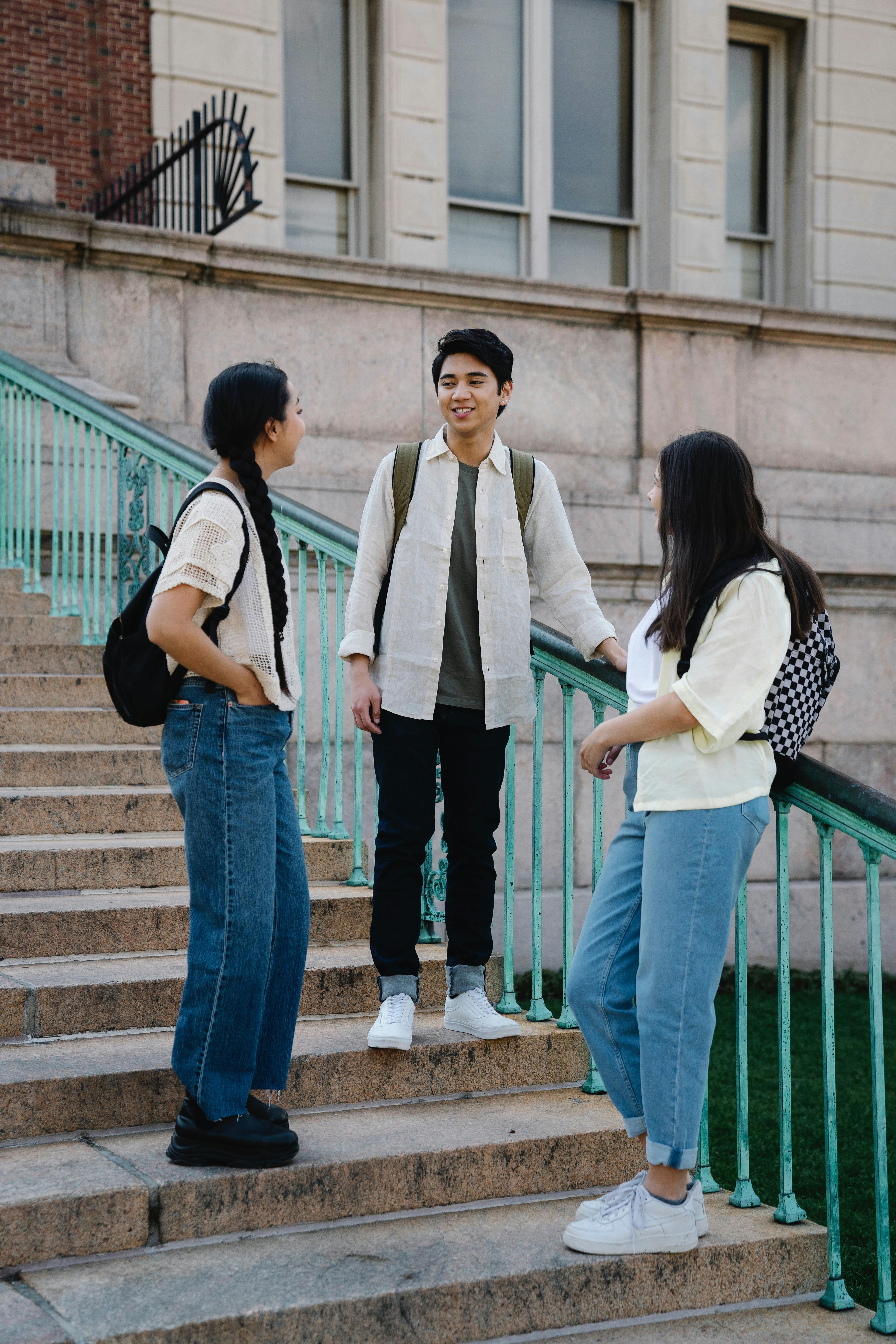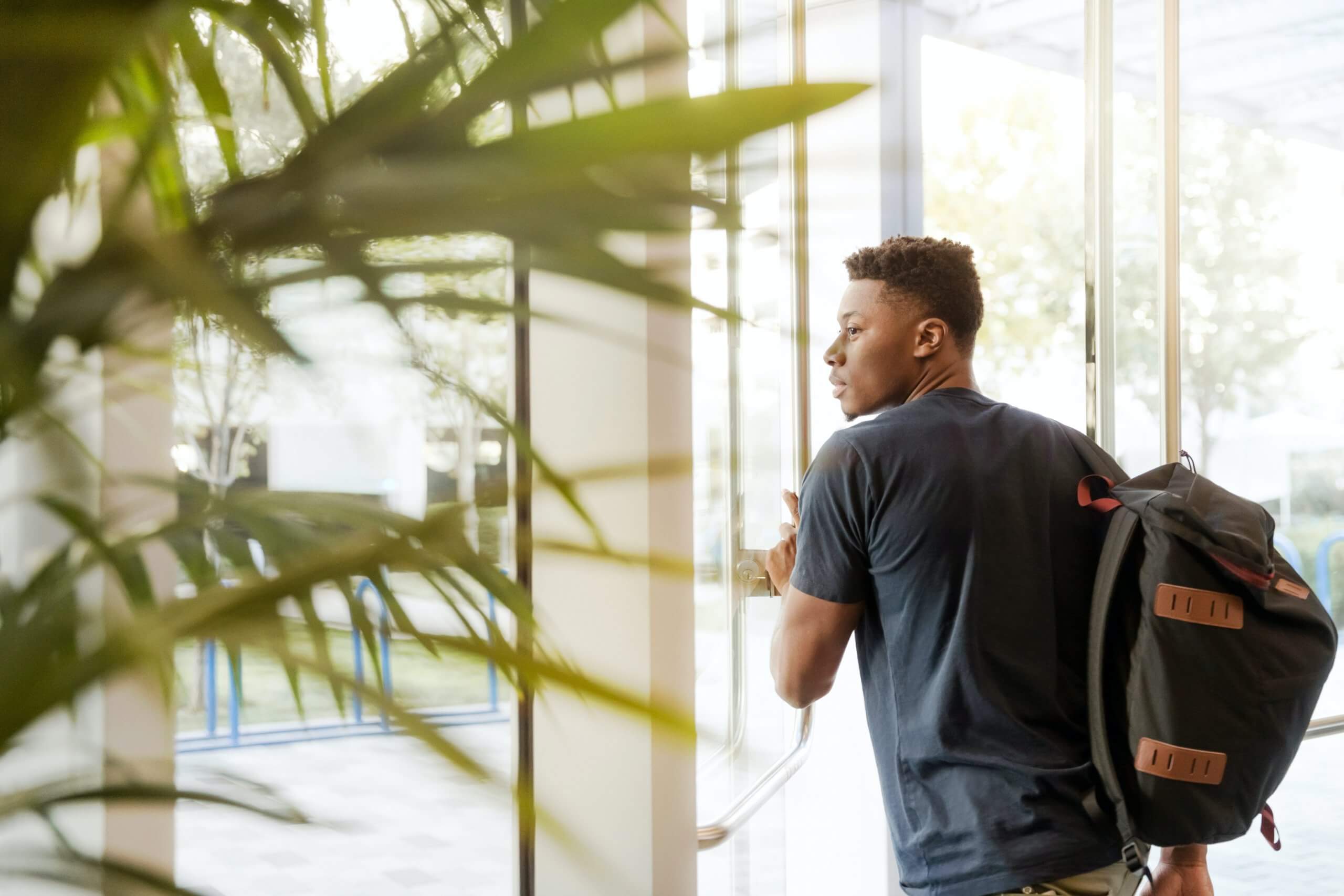How to leverage the win-win of student-to-student connections

Every autumn, thousands of new students flock to your campus – full of hope, dreams and higher ed potential. But they’re also arriving with high levels of anxiety, expectations and loneliness.
The easy answer? Connect them with upper year senior student ambassadors and press play.
But this special relationship is a two way street. You need new students to resonate with their student ambassador, but you also need your student ambassadors to engage – to see the point of it all.
Here are some quick tips to instil asynchronous win-win features into your student ambassador program – for better admission rates, stronger retention rates and the creation of lifelong relationships which permeate past your higher ed gates.
Recognize the power of student-to-student connections
The benefits of peer-to-peer, student-to-student, connections, through platforms like Unibuddy Chat, are becoming more prominent among higher ed professionals as more digital programs come to fruition. In addition to increasing reach to prospective students, through enabling connection to student ambassadors, subsequent involvement in student ambassador programs are helping boost retention rates across all programs.
But just how much?
For Maria Bentley, Assistant Dean at Alfred University’s School of Art and Design, the impact of her student ambassador program, numbering 40 students, was considerable. We caught up with Bentley at Unibuddy Connect to discuss how she approaches her school’s approach to their student ambassador program. A program, according to Bentley, has enabled her school, within Alfred University, to increase its yield rate, calculated to determine an overall interest in attending a particular higher ed program, of about 50% – with a fat 68% boost in overall admissions over the past eight years. Post-arrival retention rates, according to Bentley, now hover at just over 90% – rates she attributes in part to the success of their student ambassadors.
Related: What is a student ambassador?
Digitize student-to-student connections
In 2020, the pandemic sent every industry topsy-turvy with sudden digital demands. While the lessons gathered from this period demonstrated the benefits of digital interactions, benefits which continue to be used, they also highlighted the challenges of translating the authenticity of peer-to-peer interactions to digital mediums. In the world of higher ed, overcoming these challenges have opened up new opportunities in reach, scale and methods through platforms like Unibuddy Chat and Unibuddy Community, for example, for recruiting and retaining students from around the globe.
According to Bentley, a lot of this opportunity came in the form of student enablement and empowerment within their student ambassador programs. Pivoting from preferred face-to-face interactions, she created a student ambassador program ran by students, under her supervision, which, as a result, organically grew to provide an authentic forum for students, both prospective and current, to engage with and mentor on their own terms, across different time-zones in preferred languages.
“It’s all about finding the right fit, so it’s really about allowing students to see if this [your institution] is the right fit for them,” says Bentley. “And then that, in turn, impacts our retention numbers.” In other words: by digitzing student-to-student connections, Bentley was providing student ambassadors with the tools they needed to scale, nurture, customize and expand their impact beyond orientation week.
Don’t forget your student ambassadors
While much focus is reserved for the objective of your student ambassador program, engaging and recruiting prospective students, an equal, often overlooked, segment of your plan is your student ambassadors. Effective student ambassador programs are ones which work to transform more senior students into authentic brand advocates.
But how do you encourage your student ambassadors to pump your brand? The simple answer is you don’t.
“What we felt was the most important piece [of our student ambassador program] was the social aspect,” said Bentley. “Where we weren’t spearheading with selling our institution, we were spearheading with ‘this is a social experience.’ And, by doing that, the conversations about our program happened naturally.
Related: What student ambassadors want: 3 top tips for a fulfilled, happy and motivated ambassador scheme
The best ambassadors are students who appreciate the opportunities for growth they received at your institution. Find these students and ask them to be ambassadors, don’t find ambassadors and ask them to be excited about school, or worse coach them to deliver a scripted and inauthentic message. Gen Z can tell the difference.
With that in mind, be sure to provide your student ambassadors with the tools, incentives and resources they need to mould their own authentic programs. According to Bentley, this comes down to encouraging more autonomy in their work – allowing them to choose when, where and how to showcase your higher ed institution.
Encourage autonomy for student ambassadors
Incoming students view student ambassadors as their future selves – as ones who have walked in their shoes before. Student ambassadors, meanwhile, need to view your program as an opportunity to network, build skills they need and gain experience they need to succeed post-graduation.
To help foster this professional environment, you need to trust your student ambassadors to tell their stories without scripting or coaching, and encourage them to take ownership of the program. Sponsor their success with the admissions toolkit you have with networking and resumé building opportunities to repay them for their hard work and commitment.
Bentley says this comes down to shaping student ambassador journeys the same way you might shape that of a prospect. In addition to providing the post-graduate incentives more senior students favour, Bentley filters in first year students to conduct campus orientation tours to help get them on track or opportunities for them to provide more information to incoming students aside from the classic “billboard in the cafeteria” scenario. Overall, Bentley says in order to achieve the authentic engagement you need to succeed, all you need to do is provide students with the tools they need to be successful and they’ll do the rest.


